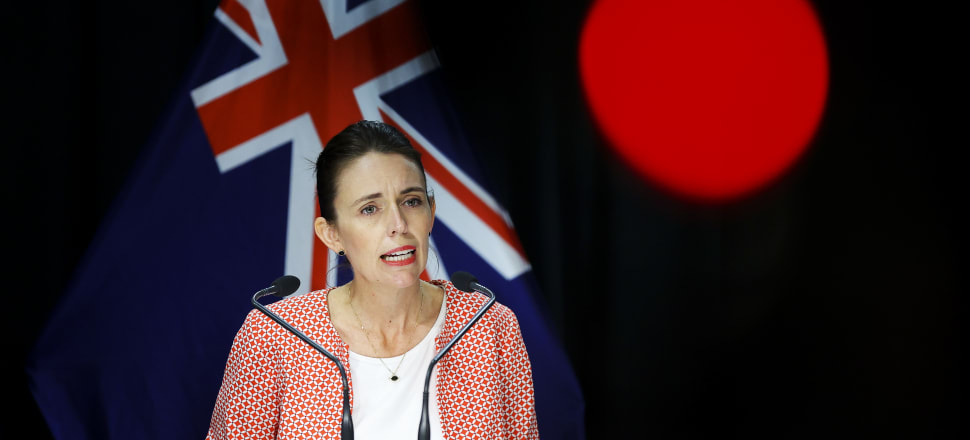
Cases could peak well above 15,000 per day, triggering the imposition of new public health protections to slow the spread of the virus, Marc Daalder reports
The BA.5 subvariant of Omicron will likely make up the majority of community Covid-19 cases in just a couple of weeks and spark a new wave of cases across July and August.
"The next wave is starting. I haven't seen updated modelling based on the estimated advantage that BA.5 has. Previously we got up to [daily] cases of close to 25,000 nationwide. I would expect us to go above 15,000," David Welch, a computational biologist at the University of Auckland, told Newsroom.
While there are still many uncertainties, Welch said that if we don't shift to more protective behaviours the next wave could easily rival the first at its peak.
As recently as the beginning of June, only 3 percent of cases were BA.5. But the Omicron subvariant is probably 40 to 50 percent more transmissible than the BA.2 variant responsible for the majority of cases to date.
The early signs of a new wave have cropped up this past week. Cases bottomed out at around 4800 last week and the seven-day rolling average of new cases reached 6422 on Friday.
The latest weekly figures from ESR show that just under 11 percent of cases sequenced in the week to June 21 were BA.5. Another 3 percent were BA.4.
Welch said overseas evidence and the rapid rise of BA.5 within New Zealand both indicate that BA.5 will dominate BA.4 and the BA.2.12.1 subvariant.
"BA.5 will outcompete those and we'll be left with a single variant environment again - until something new comes along."
ESR also provides a dataset on genomes from the border, which shows that BA.5 has become increasingly common overseas.
The Crown Research Institute's community figures are sourced from hospitalised cases as well as a random sample of community PCR tests. They're not perfectly representative of the community mix, Welch said, but it's the best we have.
If the ESR community sequences are overlaid on New Zealand's total community case curve, the rise of BA.5 becomes much clearer. BA.2 is still falling, according to this rough estimate, but overall case growth has slowed because BA.5 is making up for the loss.
A second Omicron wave will pose tough questions for a Government eager to put the pandemic behind it.
The Covid-19 Response Minister, Ayesha Verrall, said on Thursday that New Zealand will remain at the Orange setting of the traffic light system for the time being. She said the situation when New Zealand was last at Red, with more than 10,000 daily cases, was much more serious than at present.
It's also unclear whether a move to Red would make a significant difference. Few rules change at the highest setting of the traffic light system, beyond a reintroduction of the school mask mandate and a ban on indoor gatherings with more than 200 people.
"It's not clear whether the Government is going to move to a higher alert level but people should be aware that there is going to be a significant peak and they might want to implement their own shielding measures," Welch said.
"The same things that have always worked will continue to work."
Masks, ventilation, distancing and vaccines are still effective against BA.5. A fourth shot is available to those aged 50 and over as well as healthcare workers aged 30 and up.
The Government may also face pressure to update its isolation rules. After Newsroom reported that health experts considered the health advice not to test for reinfections to be "dangerous misinformation", Verrall announced a new set of evidence-aligned advice on Thursday.
That update has still left one bit of outdated advice untouched. Isolation periods still end after seven days or when a Covid-19 case's symptoms end - whichever is later. But new research has shown that half of Omicron cases are still infectious after eight days.
A test-to-release policy, which would require Covid-19 cases to test negative on a rapid test before exiting isolation, has been pushed for in the past. Rapid tests are closely aligned with infectious periods, such that a positive result after your seven days are up and your symptoms are gone means you're probably still infectious. Experts may renew their calls for these additional isolation rules to curb the spread of the new BA.5 variant.
One bit of good news is that BA.5 doesn't appear to be significantly more severe than other Omicron subvariants, although Welch said lab studies had shown it has a greater affinity for deep lung tissue. Results from similar lab studies over the course of the pandemic have not always eventuated in real world experience.
The bad news is that our big BA.2 wave may not give us much more protection than the rest of the world has. The BA.2 subvariant is slightly more similar to BA.5 than the original Omicron BA.1, but that doesn't seem to have advantaged other countries that, like New Zealand, saw BA.2 dominate their first Omicron waves.
"Initially there was a bit of hope that maybe BA.2 would be more protective against BA.5 but that doesn't really seem to be the case," Welch said.
Another recent lab study found that antibodies produced by three doses of Pfizer vaccine were half as effective at neutralising BA.4 and BA.5 as they were at neutralising BA.1 and BA.2. That would indicate that vaccines are less effective at preventing infection by BA.5 - though still better than nothing - but doesn't shed much light on whether they'll remain highly effective at warding off severe illness and death.







